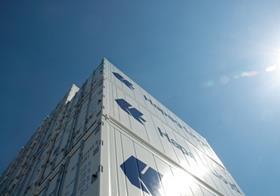
A study comparing the environmental impact of the two main methods of transporting fresh produce by sea has revealed that containerships generate 27 per cent more emissions of greenhouse gasses than specialised reefer ships.
The research, carried out by the Agribusiness and Economics Research Unit (AERU) of Lincoln University in Christchurch, New Zealand, set out to assess more fully the shipping emissions generated in fresh produce supply chains, which has received less attention in previous studies.
Using the kiwifruit industry as an example, the study focused on shipping emissions and measured greenhouse gasses (GHGs) on outward and return journeys, while accounting for different shipping routes, ship utilisation, and the volume and weight of cargo.
When the emissions of port activities, refrigerant losses and transport of fruit from orchard to port were included, the study found that GHGs produced by container shipping were even higher, exceeding those created by specialised reefer shipping by 36 per cent.
“This report clearly demonstrates that shipping fruit in specialised reefer vessels creates a significantly smaller carbon footprint than shipping in with container lines,' said Walter Wildöer, chairman of the 360 Quality Association, which oversees the implementation of standards among specialised reefer shipping companies and terminal operators.
“A specialised reefer service picks up its perishable cargo and heads directly for its destination port, with limited port calls only scheduled en route to add further cargo,' Mr Wildöer continued. 'A containership, meanwhile, makes far longer round trips, with frequent stops.
'It is the same difference as between a taxi, which picks up from origin A and drops at destination B; and a bus, which takes an indirect route and stops many times. However, as this report shows the carbon footprint of the taxi per unit is also demonstrably smaller than that of the bus.”
A recent industry report by independent shipping advisor Drewry showed that the international specialised reefer industry had a capacity of 304.5m ft3 and transported 43.6 per cent of all perishable products last year, while container shipping took 56.5 per cent of perishables but had an overall refrigerated capacity of 1.99bn ft3.
“As shown by the Drewry report, the reefer industry is using its resources much more efficiently, taking 43.6 per cent of perishable cargo using 13.2 per cent of the shipping industry’s capacity, compared with the 56.5 per cent taken by container shipping lines, but with 86.8 per cent capacity,” added Mr Wildöer.
“The findings of the Lincoln University report have implications for anyone involved in the fresh produce business wanting to ensure their environmental impact is as small as is possible. This includes exporters, importers and retailers – as well as end consumers, who are becoming increasingly hungry for information on the environmental impact of their purchases.”



